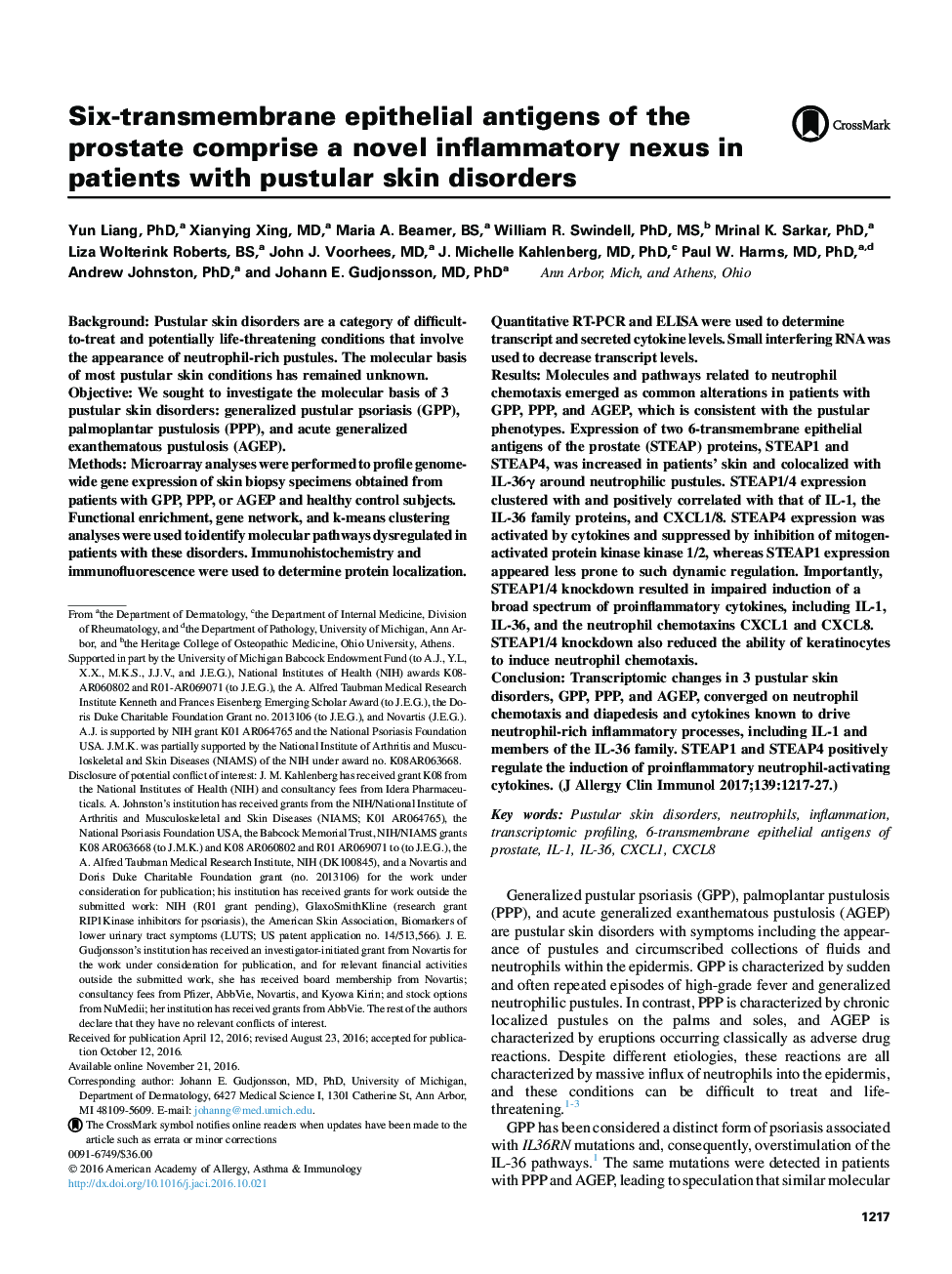| کد مقاله | کد نشریه | سال انتشار | مقاله انگلیسی | نسخه تمام متن |
|---|---|---|---|---|
| 5647120 | 1407077 | 2017 | 11 صفحه PDF | دانلود رایگان |
BackgroundPustular skin disorders are a category of difficult-to-treat and potentially life-threatening conditions that involve the appearance of neutrophil-rich pustules. The molecular basis of most pustular skin conditions has remained unknown.ObjectiveWe sought to investigate the molecular basis of 3 pustular skin disorders: generalized pustular psoriasis (GPP), palmoplantar pustulosis (PPP), and acute generalized exanthematous pustulosis (AGEP).MethodsMicroarray analyses were performed to profile genome-wide gene expression of skin biopsy specimens obtained from patients with GPP, PPP, or AGEP and healthy control subjects. Functional enrichment, gene network, and k-means clustering analyses were used to identify molecular pathways dysregulated in patients with these disorders. Immunohistochemistry and immunofluorescence were used to determine protein localization. Quantitative RT-PCR and ELISA were used to determine transcript and secreted cytokine levels. Small interfering RNA was used to decrease transcript levels.ResultsMolecules and pathways related to neutrophil chemotaxis emerged as common alterations in patients with GPP, PPP, and AGEP, which is consistent with the pustular phenotypes. Expression of two 6-transmembrane epithelial antigens of the prostate (STEAP) proteins, STEAP1 and STEAP4, was increased in patients' skin and colocalized with IL-36γ around neutrophilic pustules. STEAP1/4 expression clustered with and positively correlated with that of IL-1, the IL-36 family proteins, and CXCL1/8. STEAP4 expression was activated by cytokines and suppressed by inhibition of mitogen-activated protein kinase kinase 1/2, whereas STEAP1 expression appeared less prone to such dynamic regulation. Importantly, STEAP1/4 knockdown resulted in impaired induction of a broad spectrum of proinflammatory cytokines, including IL-1, IL-36, and the neutrophil chemotaxins CXCL1 and CXCL8. STEAP1/4 knockdown also reduced the ability of keratinocytes to induce neutrophil chemotaxis.ConclusionTranscriptomic changes in 3 pustular skin disorders, GPP, PPP, and AGEP, converged on neutrophil chemotaxis and diapedesis and cytokines known to drive neutrophil-rich inflammatory processes, including IL-1 and members of the IL-36 family. STEAP1 and STEAP4 positively regulate the induction of proinflammatory neutrophil-activating cytokines.
Journal: Journal of Allergy and Clinical Immunology - Volume 139, Issue 4, April 2017, Pages 1217-1227
